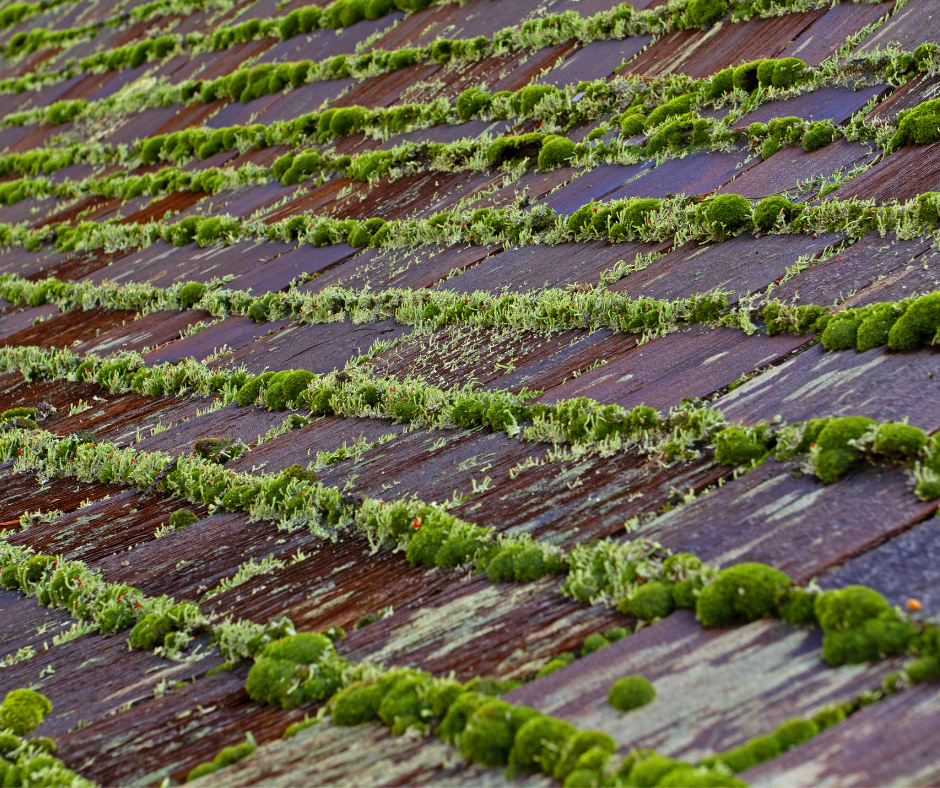The presence of dark streaks on roofs can be a huge cause for concern for homeowners. For some people who highly cherish the appearance of their homes, the presence of dark streaks can be an irritating eyesore. Meanwhile, some other homeowners may be worried about the effect of these streaks on their roof’s structure.
What causes these streaks? Can you remove or prevent them? Keep reading to find out the answers to these questions.
What Are The Black Streaks On Your Roof?
Though the dark stains and streaks on your roof may resemble dirt, soot, mold, or mildew, they are algae. The most common type of this algae is known as Gloeocapsa magma, sometimes called blue-green algae. At first, this algae starts growing as little patches before forming clear stripes. By the time you notice their presence on your roof, they will have been growing on it for at least two months.
You may be wondering why these algae majorly appear in black colors. This is because Gloeocapsa can develop a protective coating in the form of dark pigmentation on its outer layer. This dark pigmentation helps to shield the algae from harmful UV rays.
This is why they form ugly black streaks on your roof.
How Algae Gets on Your Roof
Since it travels best through the air, this alga spreads via the wind. Animals are also good carriers of gloeocapsa magma. When an animal lands on a surface with algal spores, the algae pores follow the animal. The animal can transfer the pores if it moves to an algae-free roof surface. This is how the algae gradually spread through the neighborhood.
Aside from animals, coastal, warm, and humid climates also produce hospitable circumstances for algae growth.
What Causes Black Streaks on Your Roof?
Different things can cause black streaks on your roof. Here are some of the most common ones.
1. Algae growth – Gloeocapsa magma
Algae can grow on roofs, especially in humid or warm climates. This can cause streaks or discoloration on your roof.
2. Mold and Mildew
Though they are not as common as algae, mold or mildew sometimes cause streaks and spots on your roof. Both mold and mildew can quickly grow on your roof’s surface during wet, humid seasons.
This often leads to the surface of your roof becoming damp, which encourages damage and worsens mold and mildew growth.
You should remove this as soon as possible to preserve the integrity of your roof, but resist the urge to use a high-pressure washer on these discolored areas. You can unintentionally weaken your shingles’ structural integrity and make things worse.
3. Dirt or debris
Wind, leaves, branches, and other environmental factors can easily cause your roof to accumulate dirt and other stains. If your gutters and roof valleys accumulate too much dirt, leaves, sticks, insects, and other debris, it can cause streaks to appear.
You can get rid of dirt and debris using rubber gloves, a safety ladder, and footwear with good grips. The rubber gloves help you efficiently rake away leaves and sticks and scoop up dirt and filth. Ensure to carry out the cleaning procedure with care. You should hire the service of a roofing professional like The Roofpro.
4. Water damage
If the roof has experienced water damage, such as from a leak or heavy rain, it can cause streaks to appear.
5. Roof age
As a roof ages, it can become more prone to streaking due to wear and tear.
6. Incorrect cleaning methods
Using harsh or abrasive cleaning products, or applying them in the wrong way, can cause streaks to appear on the roof.
If you are concerned about streaking on your roof, having a roofing professional inspect it is a good idea to determine the cause and the best course of action.
How Can You Remove Dark Streaks From Your Roof?
There are several steps you can take to remove dark streaks from your roof:
· Clean the roof:
Use a soft-bristled brush or a hose with a high-pressure nozzle to gently remove any dirt, leaves, or other debris from the roof.
· Remove any algae:
If the streaks are caused by algae growth, you can use a solution of water and a roof-safe cleaner specifically designed to kill and remove algae. Follow the manufacturer’s instructions for application.
· Repair any damage:
If the streaks are caused by water or other types of damage, it may be necessary to repair the roof before attempting to remove them.
· Use a gentle cleaning solution:
If the streaks are still present after cleaning and removing algae, try using a gentle cleaning solution, such as a mixture of water and mild detergent. Apply the solution with a soft-bristled brush and rinse thoroughly with water.
· Seek professional assistance:
If the streaks persist after these steps, or if you are unsure of the cause of the streaks, it is a good idea to seek the assistance of a professional roofing contractor. They will be able to assess the condition of your roof and recommend the best course of action for removing the streaks.
Conclusion
If you want to restrict algae growth on your roof properly or upgrade your roof, feel free to consult us at The Roofpro for assistance. We will address all your roofing inquiries and provide you with what you need.


